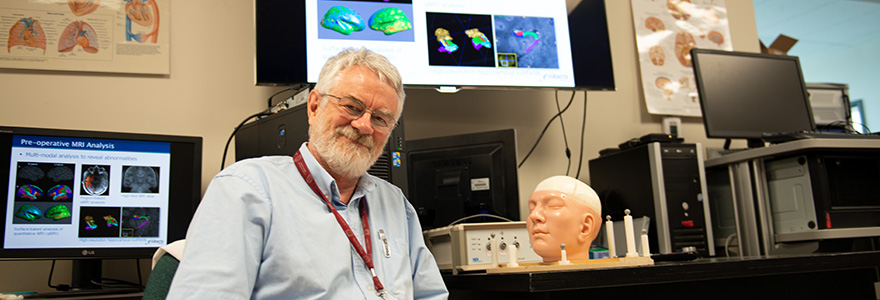Technology

Software
Echelon
Echelon is an image guidance platform based on the Atamai Viewer, specifically designed specifically for real-time intracardiac IGS. A
Slicer
The Peters' group members make extensive use of 3D Slicer (http://www.slicer.org) for image segmentation, registration, fusion
Hardware
Computation
- several GPU-enabled workstation grade machines for image processing experimentation
- two rack-mounted compute clusters with 4 NVIDIA Tesla® C2075 co-processors running Ubuntu
linux - one rack-mounted computer cluster with 4 NVIDIA Tesla® C2075 co-processors running Microsoft® Windows 7
Mixed Reality
Research into mixed reality has been accelerated by the commercialization of
Imaging
Being a Robarts Imaging lab, access to imaging technology is extensive. Current assets include multiple 2D ultrasound machines with several linear,
Phantoms
Our facilities include both manufactured and purchased phantoms including:
- unique beating heart phantom (proceedings.spiedigitallibrary.org/proceeding.aspx)
- skull covered brain phantom
- mixed reality neurosurgery phantom
- z-bar ultrasound calibration phantom
carotid artery and jugular vein phantom for central-line procedures- spine phantom for spinal
duratomy procedures and epidural injection procedures - more...
Rapid Prototyping
The Peters lab has completely adopted 3D printing of plastic and metal as a method of decreasing the time required to iterate phantom and accessory design. Plastic printing includes an Objet30 Pro
Position Tracking
Position tracking is an integral part of research in the lab. Magnetic and optical tracking
Other
We currently have several methods for displaying stereoscopic images and video. Currently in the lab are numerous high-definition flat-panel stereoscopic displays and a novel autostereoscopic monitor from Dimension Technologies Inc.








